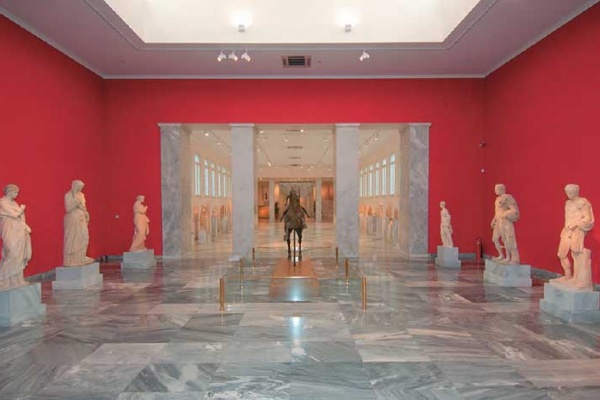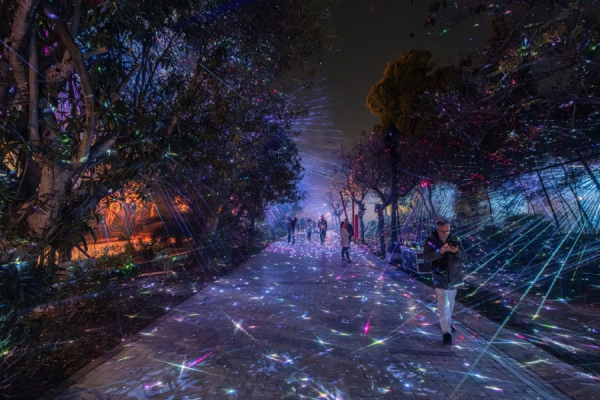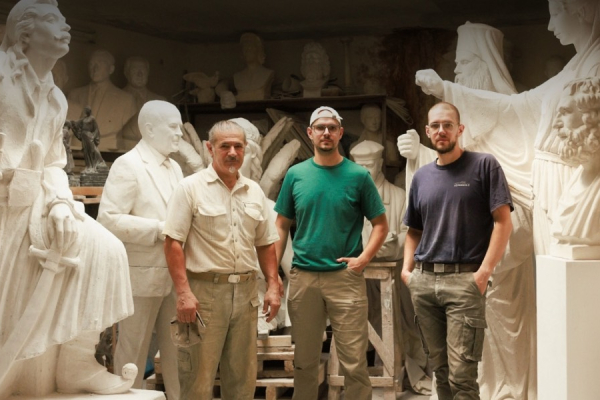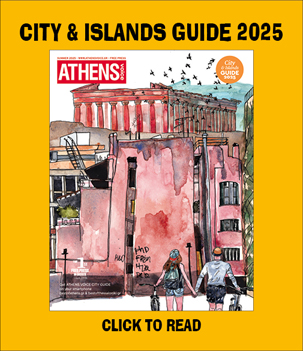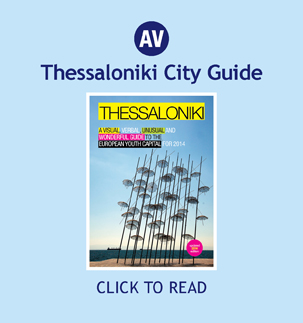It is 150 years old today. Here follows an extensive Athens Voice feature published one year ago...
Its foundation on the 3rd October 1866 is not accidental. It symbolizes the coming of age of the new Greek state and the realization that this country's archaeological wealth coincides with its history. It must be protected from smuggling within Greece and abroad and must be used, exhibited in order to enhance the country's social and cultural awareness. It was preceded by the foundation in 1837 of the “Archaeological Association in Athens”. The current running exhibition sets this particular tone especially with the two final exhibits. The first to find a roof for archaeological findings is Kapodistrias and he uses the building of the Aegina Orphanage. When Athens became the country's capital, their move was necessary and thus they were “parked” in several places with the central one being in a depot in Thissio.
Finding the land for building NAM is a story full of intrigue. Eleni Tositsa buys the land and donates it to the Greek State – hence the name of the infamous pedestrian way to the museum's right. The neoclassical building's blueprints bare three signatures: Ludwing Lange, Panagis Kalkos, Ernst Ziller. It becomes 8.000 sq.m. in the 20th century and the first exhibition is held there in 1910. Today there are 60 halls hosting collections of Prehistoric antiquities, sculptures, ceramics, micro-artifacts, metalworks, Egyptian and Eastern antiquities plus contemporary exhibitions. Beneath the museum there are 200.000 exhibits handled by restorers and archaeologists as a means of research and education. You read about all this and there is already an adventure film playing in your head. You enter ignorant and you emerge an archaeologist. But things aren't always this simple...
The building and its people
It is very well understood that the politicians' speech about “our culture being our strongest suit” are actually empty words. It is sadly very well proven in this case with the negligence shown by all governments regarding the museum's surroundings. For years and years our National Archaeological Museum has been the meeting point for drug trafficking.
Today things seem... “cleaner”, but not quite. During the summer you might overlook the museum's surroundings in order to get quickly to the air conditioned inside. On an occasional rainy day though it all looks abandoned and indifferent. Wouldn't it be nice to have at least some statues? Then I remind myself that I live in the capital of unaccountability of graffiti and I forget about it.
Inside only a handful of tourists (mainly Japanese) – you can actually see the admiration in their eyes. I don't have to imagine what it would be like with 4.500 visitors inside (they were these much on the night of the August full moon when the museum had free entrance), to wonder whether it is small or really full of exhibits one on top of the other. There are so many exhibits stacked together that it feels like eating at a huge buffet. It is certain you will leave with great indigestion.
Museum employees, to whom I spoke do not agree. I have to clarify here that they refused to give their names stating that the museum is a collective effort. “We are not politicians so we won't say much” was their way of saying it. I begged to differ stating that museums are what their people make them, from guards to higher management. I was ready to dismiss them as mere civil servants if it weren't for their passion in their commentaries during the guided tour they gave me. “We have to arrive to the point where people do not make a difference” was their answer.
The exhibition of so many artifacts creates an intellectual pressure. You have to come back again and again in order to appreciate it better. But no tourist has the time to do so. There is the contemporary way to exhibit – few exhibits and lots of explanations using multimedia – and there is the academic way chosenby the museum. They have predetermined that they are all masterpieces thus they cannot be treated differently. The fact that they keep so many findings in their storage rooms is in sync with international museums keeping staff hidden away. The action called “Invisible Museum” gave the opportunity to visitors to enjoy one artifact from the storage room every two months when it is again put away. Special Exhibitions also bring exhibits up from “downstairs”, renewing the interest in the museum. The artifacts in the storage rooms are also a tool to the museum's internationally acknowledged research and educational aspect. The Ministry of Culture has recurrently thought about expanding the museum underneath the surrounding area bringing on questionable smiles and loads of council meetings.
There is a lot to be said about the Ministry's politics, using the museum's revenues to finance other smaller museums in smaller districts. In the museum this is considered as retribution since many artifacts do come from all around Greece. The museum's café is not open to non visitors. The museum shop – internationally accepted as the main source of revenues for a museum – belongs to the state owned Archaeological Receipts Fund. The museum's archaeologists simply suggest which in their opinion are ideal exhibits to be copied and sold at the shop. What one finds in the museum shops in this country's archaeological museums is a bitter,very long story. This museum is part of this network. It should noted that exhibitions by the museum held abroad were not accompanied by copies for sale. This is fortunately about to change. (The special exhibition “Sunken Treasure – the Antikythera shipwreck” has already been on show since the 27/9 at the The Antikenmuseum Basel in Switzerland and will be there for 6 months)
During the last year there 450.000 visitors per year and last August there was a 14% increase compared to the pre crisis August of 2009. In the annual feature of the internationally acclaimed review “The Art Newspaper” for 2014, only the Acropolis museum is in the list of widely visited museums of the world (41st with 1.377.405 visitors). It makes sense as it is related to one of the world's most famous monuments. It also shows that only a fraction of the 24 million tourists visiting Greece actually visit Athens. Is it the price of admission (general admission €7, reduced €3)? If you compare it with other museums with lesser value the price is low. Is it low though for the average Greek living in a country in crisis who would like to visit the museum more then once? There is though a European guideline prohibiting diverse ticketing for local and foreign visitors. Is it promotion? The museum's internet site is not particularly user friendly and there is a complete lack of social media use. Searching through archaeology-travel.com, the site where you can find all archaeological exhibitions around the world, the “Invisible World” exhibition is not mentioned. Is it the area's long lasting issues which drive away visitors from Greece and elsewhere? Is it lack of parking space for tourist buses? Most tourists visit on their own. Or is it that it is not enough to possess masterpieces you have to also “wrap them up” beautifully to make them more attractive?
In the current sightseers exhibition it is revealed that Athens was once in fashion – without even trying. Should the museum return to fashion? Should it also be a reason to visit Athens? It does not deserve to be outside any list. Until something happens though – if it ever happens – we can always return. Believe me when I say it works like an injection of optimism. The artifacts are speaking for themselves and are making us feel so much better.



